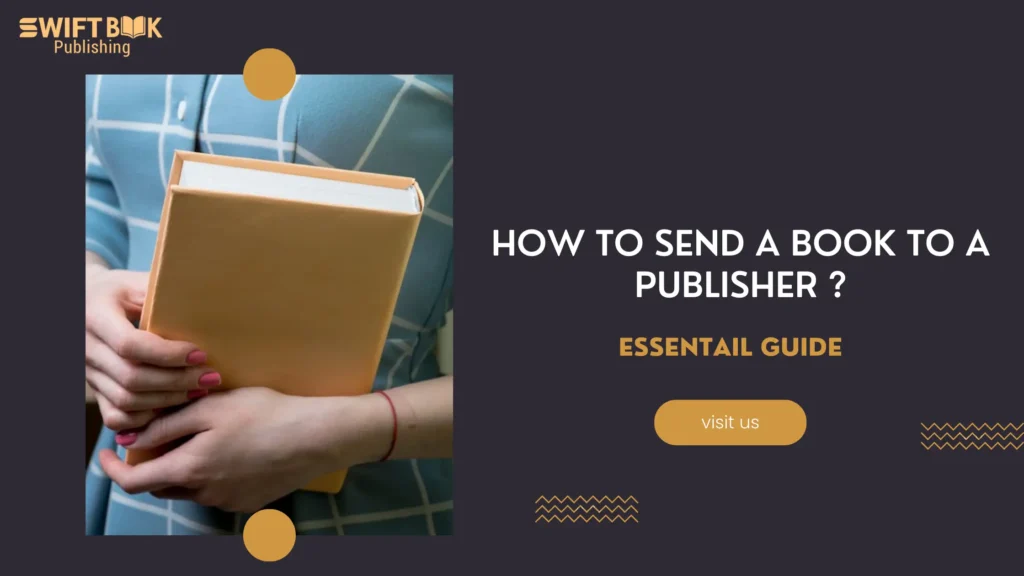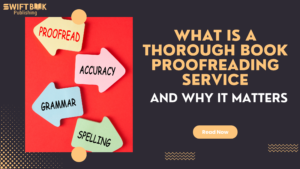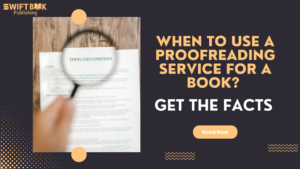The journey from writing a manuscript to seeing your book published can feel overwhelming. You’ve poured your heart and soul into your work, but now comes a daunting challenge: how to send a book to a publisher. Many authors struggle with this step, wondering how to make sure their submission stands out, what the proper protocol is, and whether they’re taking the right approach. If you’ve been losing sleep over these questions, you’re not alone. The world of book publishing is competitive, and one misstep can cost you a crucial opportunity.
This guide will walk you through every step of the submission process, from preparing your manuscript to learning how to submit a book to a publisher. Whether you’re trying to figure out how to send a book to a publisher for the first time or looking for tips to increase your chances of success, we’ve got you covered
Key Takeaways
- A well-prepared manuscript is crucial for submission.
- Researching the right publisher increases success chances.
- Following up is important after sending a submission.
Why Many Authors Struggle to Send a Book to a Publisher
The idea of sending a book to a publisher can create anxiety for several reasons:
- Fear of rejection: One of the biggest concerns authors face is the possibility of rejection. With so many manuscripts competing for a publisher’s attention, it’s easy to worry that yours might not make the cut.
- Lack of guidance: Many writers are unsure about the correct process or what publishers are really looking for. Questions like Can I send my book to a publisher without an agent? or What’s the best way to send book to publisher? often go unanswered for first-time authors.
- Uncertainty about where to submit: With countless publishers out there, how do you know which one is the right fit for your book? Should you aim for a big-name publisher or a smaller, niche one? If you’re unsure of how to submit book to publisher, you’re not alone.
This blog will address these concerns, helping you approach the submission process with clarity and confidence.
Publishing Process: How to Send a Book to a Publisher
The publishing process can seem complex. It is essential for authors to grasp the differences between traditional and self-publishing, the role of literary agents, and the criteria publishers use to select manuscripts.
Each aspect plays a vital part in an author’s journey to publication.
Traditional vs Self-Publishing
Before you even think about how to send your book to a publisher, it’s crucial to understand which type of publisher is right for you.
Different publishers specialize in different genres, and it’s important to know where your book fits in.
| Aspect | Traditional Publishing | Self-Publishing |
| Control | Publisher controls editing, design, distribution, and marketing | Full control over editing, design, pricing, and marketing |
| Costs | Publisher covers costs (editing, design, printing, etc.) | Author bears all costs upfront (editing, design, marketing, etc.) |
| Profit Share | Author receives royalties, usually 5-15% of sales after recouping advance | Author keeps a larger share of profits (up to 70% depending on platform) |
| Advance Payment | Authors often receive an advance payment upon signing a contract | No advance; profits depend on sales |
| Distribution | Wide distribution through established channels (bookstores, libraries) | Author manages distribution, often relying on platforms like Swift KDP |
| Marketing | Publisher handles most marketing but expects author participation | Full responsibility for marketing falls on the author |
| Submission Process | Requires submission of a query letter or proposal, often through an agent | No submission needed; author decides when to publish |
| Time to Publication | Can take months to years from acceptance to release | Faster, with some authors publishing within weeks or months |
| Reputation/Prestige | Traditional publishing often carries more prestige and credibility | Self-publishing can be seen as less prestigious, though this is changing |
| Creative Freedom | Limited creative freedom, as publishers may request changes | Complete creative freedom over content and design |
Deciding which type of publisher you want to work with helps you focus your search and increases your chances of success when you submit a book to a publisher.
Role of Literary Agents
Literary agents act as intermediaries between authors and publishers. They help authors refine their manuscripts and navigate the submission process. Agents have valuable connections in the industry, increasing the chances of getting published.
Most agents specialise in specific genres. This expertise ensures they can represent authors effectively. Agents typically take a commission of 15% of the author’s earnings. Thus, choosing the right agent can significantly impact an author’s success in securing a book deal.
Publisher’s Selection Criteria
Publishers evaluate manuscripts based on several factors. They look for a unique voice, engaging characters, and a compelling plot. The target audience also plays a crucial role. Publishers want books that will resonate with readers and sell well.
Proposals should be well-presented and free of errors. A strong query letter can make a difference.
Publishers often assess market trends and genre popularity to make informed decisions. Understanding these criteria can help authors prepare their submissions effectively.
Create a Strong Query Letter
The query letter is your introduction to the publisher. It’s the first impression you make, and it needs to be compelling. A well-written query letter can significantly boost your chances when you submit a book to a publisher.
Essential Elements of a Query Letter:
- Hook: Start with an engaging hook that makes the publisher interested in your book.
- Book synopsis: Provide a short but impactful summary of your book in 1-2 paragraphs.
- Credentials: Mention any relevant qualifications, such as previous writing credits or professional expertise.
- Close: Politely request if they’d like to see the manuscript and provide your contact information.
A strong query letter can make all the difference when you submit your book to a publisher.
Preparing Your Manuscript
A well-prepared manuscript is crucial for grabbing a publisher’s attention. It requires careful steps, from finalising the draft to ensuring the document meets specific formatting specifications. Each part is essential for presenting the work professionally.
Finalising Your Draft
Before submission, the writer must ensure their draft is polished and complete. This stage involves multiple rounds of revisions. The author should focus on clarity, flow, and character development.
Authors can benefit from reading the manuscript aloud. This practice helps identify awkward phrasing and inconsistencies. Seeking feedback from trusted peers can also provide valuable insights.
She should make necessary changes based on this feedback. If needed, consider working through a few rounds of revisions to refine the text.
Professional Editing
Engaging a professional editor is a key part of preparing the manuscript. An editor will provide an objective eye and help improve the overall quality of the work.
There are various types of editing, including:
- Developmental Editing: Focuses on content structure and narrative elements.
- Copy Editing: Fixes grammar, punctuation, and consistency errors.
- Proofreading: The final check for typos and formatting issues.
Investing in professional editing can greatly enhance the manuscript’s chances of success. A well-edited book is more likely to meet publisher expectations and attract readers.
Formatting Specifications
A manuscript must adhere to specific formatting guidelines. Proper formatting shows professionalism and respect for the publisher’s submission process. Key aspects to consider include:
- Font: Use a standard font like Times New Roman or Arial, size 12.
- Spacing: Double-space the entire manuscript for readability.
- Margins: Set 1-inch margins on all sides.
- Page Numbers: Include page numbers in the top right corner.
- Header: Each page should have a header with the author’s name and title.
Following these specifications ensures the publisher can easily read and assess the manuscript. Proper formatting can create a positive first impression and improve the overall submission experience.
Creating Your Submission Package
A well-prepared submission package is crucial for getting a book noticed by publishers. This package typically includes a cover letter, a synopsis, and a sample chapter. Each part needs to be clear, concise, and professionally crafted to showcase the author’s work effectively.
Designing a Cover Letter
The cover letter is the first impression an author makes on a publisher. It should be tailored to the specific agent or publisher being approached. The letter should introduce the author and the book, mentioning the genre and word count.
Key elements to include are:
- Personal Greeting: Address the recipient by name, if possible.
- Brief Introduction: State your name and the title of the manuscript.
- Compelling Hook: Include a short, captivating summary of the book.
- Author Credentials: Mention any relevant writing experience or publications.
The letter should be professional yet engaging, ideally no longer than one page.
Synopsis Writing
A synopsis summarises the plot and main themes of the book. This document should outline the key points without giving away every detail.
Writers should focus on:
- Main Characters: Introduce the protagonist and any significant secondary characters.
- Setting: Briefly describe where the story takes place.
- Plot Overview: Summarise the beginning, middle, and end of the story in three paragraphs.
- Themes: Highlight the core themes or messages the book conveys.
Keeping it between 500 to 800 words is often ideal, as it provides enough detail without overwhelming the reader.
Curating a Sample Chapter
The sample chapter is an opportunity to showcase writing style and the book’s voice. Authors should select a chapter that offers a strong sense of the narrative and character development.
Considerations for choosing the chapter include:
- Engaging Start: The chapter should hook the reader from the first sentence.
- Character Development: It should reveal essential aspects of the main character.
- Key Events: Include significant plot points or conflicts.
Generally, one to three chapters are adequate, making sure they are polished and free of errors to reflect professionalism.
Researching Potential Publishers
Researching potential publishers is essential for any writer aiming to get their book published. It helps authors find the right fit for their work and increases their chances of acceptance. This involves identifying suitable publishers and understanding their submission guidelines.
Identifying Suitable Publishers
Authors should start by pinpointing publishers that specialise in their genre. This approach increases the chances of a successful submission.
- Genre and Audience: Consider the genre of the book and the target audience. For instance, a romance writer should not approach a publisher specialising in academic texts.
- Publisher’s Philosophy: Learn about the publisher’s values and mission. This information can often be found on their website.
- Recent Releases: Examine recent publications to see what types of books the publisher is currently producing. This can provide insight into whether they might be interested in a new submission.
Several online resources and databases can assist in finding suitable publishers. Following these steps can save time and effort in the submission process.
Understanding Publisher’s Guidelines
Each publisher has unique submission guidelines that authors must closely adhere to. Understanding these helps ensure submissions are considered.
- Submission Formats: Check the submission guidelines. Some publishers may want the first three chapters, while others may want the full manuscript. Knowing how to send book to publisher in the correct format increases your chances.
- Query Letters and Synopses: Most publishers require a query letter and a synopsis. It’s crucial to understand what they want in these documents and follow the requested format.
- Response Times: Publishers may vary in how long they take to respond to submissions. Authors should be aware of this timeline when submitting their work.
Negotiating these guidelines properly can significantly improve an author’s chances of getting noticed.
Sending Your Submission
Before you can submit book to publisher, your manuscript needs to be in perfect shape. Formatting errors, grammatical issues, or a poorly organized manuscript can cause a publisher to dismiss your work immediately..
Choosing the Right Time
Timing plays a crucial role in the submission process. An author should avoid sending their manuscript during busy publishing periods, such as just before major book fairs or holidays. Researching the best times specific to the genre can help.
In addition, an author should ensure their manuscript is polished and complete. Sending a draft not ready for submission can lead to rejection. It may also be beneficial to align the timing with marketing trends related to the book’s content.
Submission Methods
There are various ways to submit a manuscript. Many publishers prefer email submissions, while some may still accept physical copies. It is essential for an author to check the publisher’s submission guidelines.
Each publisher may have specific requirements, such as file formats, cover letters, and query letters. Following these guidelines precisely increases the chance of a successful submission.
Using manuscript tracking systems or submission tracking spreadsheets can help manage multiple submissions effectively. This ensures that authors do not accidentally submit to the same publisher multiple times or miss a response.
Tracking Your Submissions
Keeping track of submissions is vital for authors. A well-organised system helps monitor which publishers received the manuscript, the date sent, and any responses.
Creating a simple table can assist in this process. The table might include columns for the publisher’s name, submission date, response date, and notes. This method keeps information clear and easy to review.
Regularly checking for updates from publishers can ensure timely follow-ups. This step demonstrates professionalism and genuine interest in the collaboration.
Following Up With Publishers
Following up with publishers is an important step in the submission process. It helps maintain communication and clarifies any uncertainties regarding manuscript status. Writers should be mindful of timing and professional etiquette when reaching out.
Establishing Communication
When considering a follow-up, it is crucial to respect the timeline set by the publisher. Many publishers provide guidelines specifying when to expect a response. If those guidelines are not mentioned, a general rule is to wait about three months before sending a follow-up email.
In the follow-up email, a writer should:
- Be concise: Keep the message short and to the point.
- Be polite: Use a respectful tone, thanking them for their time.
- Reiterate the submission details: Include the manuscript title and date of submission to help them locate the submission quickly.
This approach not only shows professionalism but also enhances the likelihood of receiving a thoughtful response.
Handling Rejections
Receiving a rejection from a publisher can be disheartening, but it can also be a learning opportunity. Writers should take the time to review any feedback provided, as it may offer insights into improvements for future submissions.
If a writer receives a rejection, it is helpful to:
- Remain professional: Thank the publisher for their consideration, regardless of the outcome.
- Assess feedback: If feedback is given, consider how to incorporate suggestions into future works.
- Keep submitting: Persistence is key. Each rejection brings the writer closer to finding the right publisher for their work.
The writing journey involves overcoming challenges. By being resilient and adaptable, writers can enhance their craft and increase their chances of success.
Next Steps After Acceptance
Once a book has been accepted by a publisher, the author will need to navigate two crucial areas: reviewing publishing contracts and understanding royalties and advances. These steps are vital for ensuring clear communication and adequacy in financial arrangements.
Reviewing Publishing Contracts
After acceptance, the author will receive a publishing contract. This document outlines the terms of the partnership with the publisher. It is essential for the author to read this contract carefully.
Key aspects to consider include:
- Rights: Understand what rights are being granted, such as print, electronic, audiobook, and foreign rights.
- Duration: Check how long the agreement lasts and the conditions for renewal or termination.
- Obligations: Identify the author’s responsibilities, including deadlines for revisions or promotional activities.
If there are any uncertainties, seeking legal advice is often wise. Authors should never rush into signing a contract without full comprehension.
Understanding Royalties and Advances
Royalties and advances are critical financial elements in the publishing process. An advance is a sum paid to the author before the book sells. It acts as a pre-payment against future royalties.
Royalties are typically calculated as a percentage of sales. Key points to note include:
- Percentage: Authors can negotiate their royalty percentage, often ranging from 10% to 25%.
- Sales Threshold: The book must reach a certain sales threshold before royalties are paid.
- Payment Schedule: The author should find out how often royalties are paid, usually semi-annually or annually.
Understanding these terms can greatly impact an author’s financial situation and expectations.
Marketing Your Book
Effective marketing is essential for a successful book launch. Authors need to create a clear plan to reach their target audience and engage with readers to build lasting relationships.
Developing a Marketing Strategy
An author should start by identifying their target audience. Understanding who the readers are helps in tailoring marketing efforts. This includes recognising their interests, age group, and preferred reading formats.
Next, the author needs to set goals for the marketing campaign. These goals may include increasing book sales, gaining social media followers, or securing reviews.
Creating a promotional calendar is also useful. This calendar should outline key dates for social media posts, email campaigns, and promotional events. Consistency is key, so regular engagement with potential readers is vital.
Authors can also explore various marketing channels, such as social media, blogs, and email newsletters. Each platform offers unique advantages for reaching different audiences.
Engaging With Readers
Building a strong relationship with readers can enhance a book’s visibility. Authors should focus on authenticity and openness in all interactions.
Social media platforms provide an excellent opportunity for engagement.
Authors should share behind-the-scenes content, respond to comments, and participate in discussions.
Hosting online events, such as Q&A sessions or virtual book signings, can also draw in readers. This interaction personalises the experience and fosters a sense of community.
Gathering feedback from readers through surveys can provide valuable insights. This feedback helps authors adjust their strategies to meet reader preferences better.
Lastly, authors should encourage readers to leave reviews. Reviews not only build credibility but also improve discoverability on platforms like Swift.
The Role of Digital Platforms
Digital platforms greatly impact how authors connect with publishers and readers. They offer tools for marketing, distribution, and selling books effectively, making them crucial for today’s authors.
Utilising Social Media
Social media platforms are vital for authors looking to gain visibility. They allow writers to build a fan base and interact directly with potential readers.
Key platforms include:
- Facebook: Great for community building and sharing updates.
- Twitter: Useful for networking with other writers and industry professionals.
- Instagram: Visual storytelling can engage audiences.
Authors should frequently post engaging content like progress updates, cover reveals, and personal stories to create interest.
Additionally, participating in conversations and using relevant hashtags can significantly increase reach.
By strategically using social media, authors can generate buzz around their books before submission to publishers.
E-Books and Online Retailers
The rise of e-books has changed publishing dynamics. Authors can choose to self-publish or work with traditional publishers, but understanding online retailing is essential for success.
Popular online retailers like Swift Kindle and Apple Books offer vast platforms for distribution. Authors can either publish their books directly or through a publisher’s services.
Knowing how these platforms work will help in optimising sales.
Authors should format their manuscripts correctly for digital platforms and ensure they meet specific retailer requirements.
Additionally, exploring promotional tools like discounts or free previews can drive sales.
By leveraging e-books and online retail options, authors can effectively reach a broad audience.
Don’t Let Rejections Discourage You
Rejections are part of the process when you submit your book to a publisher. Even well-established authors have faced rejection. The key is to learn from these experiences and keep pushing forward.
If you’re getting repeated rejections, consider revising your query letter or manuscript. Sometimes a small tweak can make all the difference.
Final Thoughts
Submitting your manuscript may feel daunting, but if you follow the steps outlined here, you can greatly improve your chances of success. From understanding how to send your book to a publisher to navigating the query process, persistence and attention to detail are key.
Frequently Asked Questions
Many aspiring authors have questions about how to successfully submit their books to publishers. Understanding the submission process, finding the right publisher, and knowing what to include can make a significant difference.
1. What is the proper procedure for submitting a manuscript to a publisher?
Authors typically need to prepare a query letter, which introduces their book and themselves.
Next, they should include a synopsis of the manuscript and the first few chapters or the entire manuscript, depending on the publisher’s guidelines.
This submission is usually sent via email unless specified otherwise.
2. What steps should a first-time author take to find a suitable publisher?
First-time authors should research publishers that specialise in their genre. They can use online resources, industry directories, and literary agent listings.
It’s also helpful to read submission guidelines carefully to ensure the publisher is a good fit for their work.
3. How can one publish a book at no cost?
Authors can consider self-publishing options available on various platforms. Many self-publishing services allow writers to publish their books at little to no cost.
However, they may need to invest time in learning about formatting, cover design, and marketing.
4. What is the process for getting a book published and receiving payment?
After acceptance, the publisher will typically provide a contract outlining payment terms and royalties.
Authors usually receive an advance payment against future royalties, paid out after certain milestones, like publication.
Authors must keep communication open with their publishers to ensure timely payments.
5. How much of a manuscript is required when approaching a publisher?
Most publishers require a specific portion of the manuscript, often the first three chapters or around 10,000 words.
Authors should always check the submission guidelines for each publisher, as requirements can vary significantly.
6. What are the guidelines for contacting a publisher with a book proposal?
When contacting a publisher, authors should prepare a clear, concise book proposal. This includes a query letter, a synopsis of the manuscript and relevant information about the author. Make sure to follow the publisher’s submission guidelines to ensure the proposal is considered.







